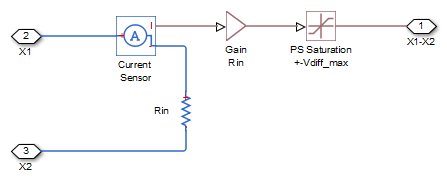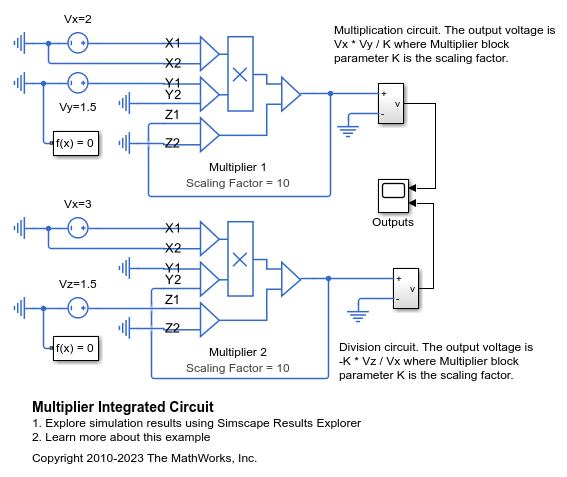Multiplier
Integrated circuit multiplier
Libraries:
Simscape /
Electrical /
Integrated Circuits
Description
The Multiplier block models an integrated circuit multiplier. The block implements the following equation, which defines the voltage applied to the output port:
where X1, X2, Y1, Y2, Z1, Z2 are the voltages presented at the input ports, A is the gain, and K is the scale factor.
In a typical multiplication circuit, the output is fed back into input Z1, which results in the following gain (assuming that A is large):
The value of the scale factor K is usually altered by an external resistor bias network. The Multiplier block implements K as an internal gain, and the external bias network is not necessary for system simulation. A typical value for K is 10, with a typical adjustment down to 3.
You can use the Multiplier block to implement a number of other functions, as well as multiplication. Examples include division, squares, and square roots. For example circuits, consult manufacturer datasheets.
The following figure shows the internal model structure of the Multiplier block. It includes the Band-Limited Op-Amp block to model finite bandwidth and slew-rate limiting.

The next figure shows one of the differential subsystem blocks. All three differential subsystem blocks are identical in structure.

Examples
Assumptions and Limitations
Only differential limiting of the inputs is implemented. You must ensure that the absolute values of the inputs you use keep the actual device operating in its linear region.
Output current is such that the integrated circuit is operating in the linear I-V region, which can be approximated by a voltage source plus a series output resistance.
Input offset voltage is not modeled, and the input voltage-current relationship is treated as linear within the differential signal voltage range.
Ports
Conserving
Parameters
Extended Capabilities
Version History
Introduced in R2010b

